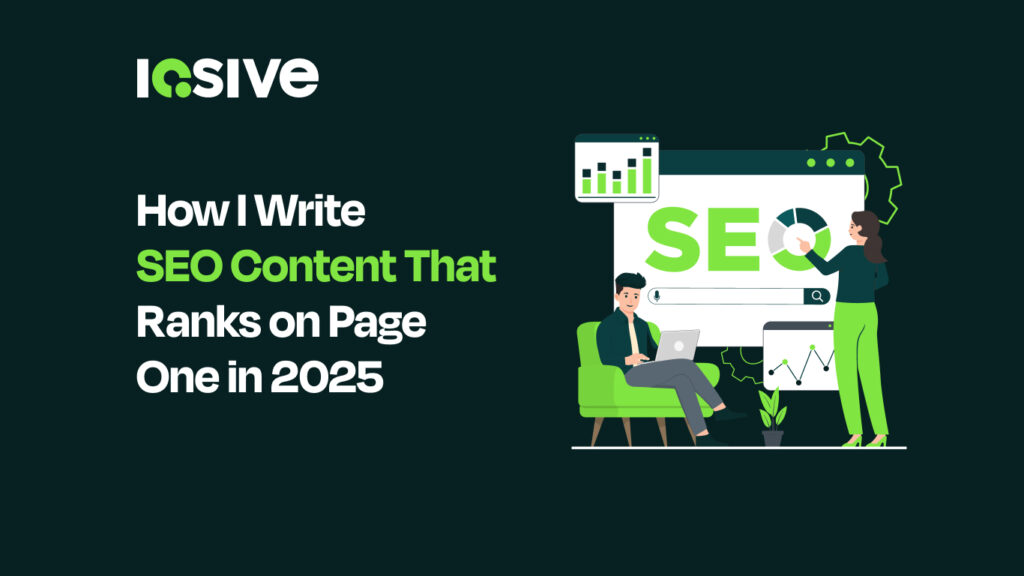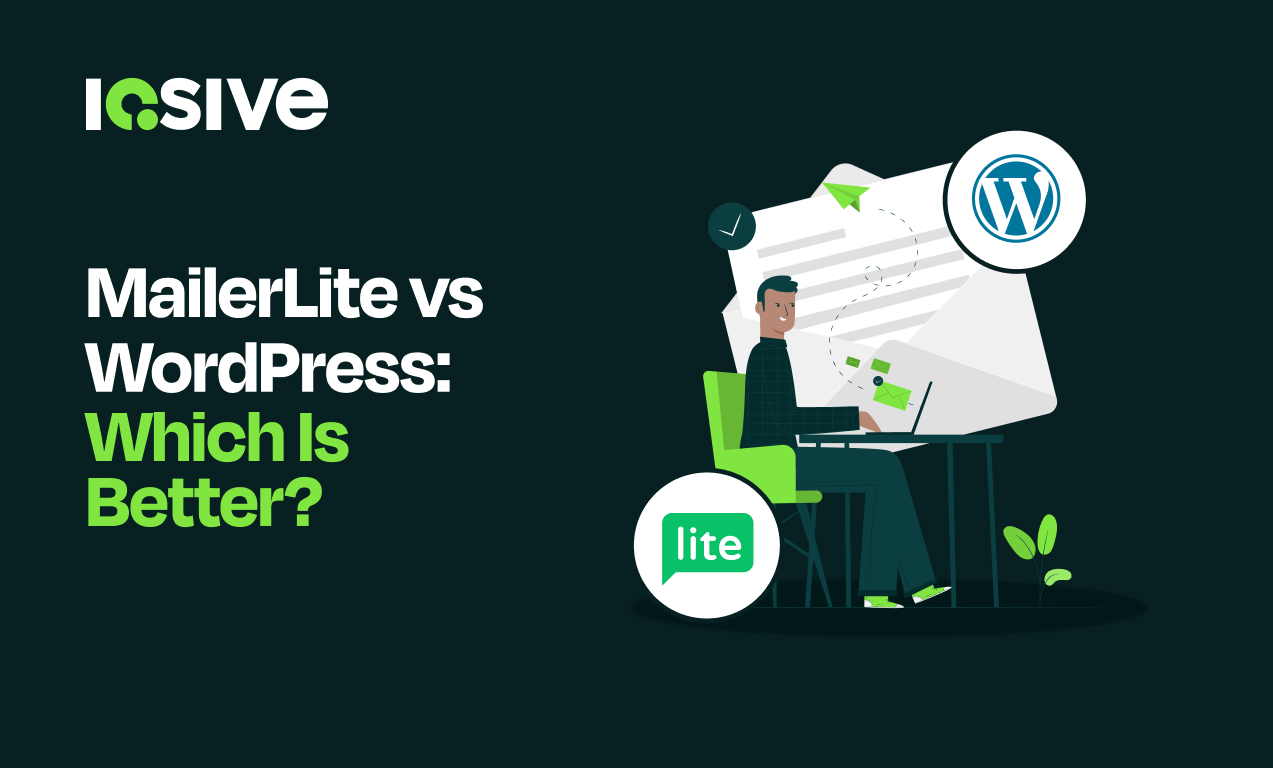In 2025, creating content that ranks on Google’s first page isn’t about chasing algorithms or keyword stuffing,it’s about creating genuine, intent-driven content that provides real value. My SEO content writing process has evolved over the years, but one thing has remained constant: a commitment to deeply understanding user needs and aligning with Google’s ever-evolving priorities. This guide breaks down the exact, step-by-step process I use to consistently write content that ranks, engages, and earns trust in the modern search landscape.
Understanding What Google Wants in 2025
How Search Intent Has Evolved
Search intent in 2025 goes beyond simple categorizations like informational or transactional. Today’s algorithms analyze micro intent by understanding why the user is searching and what they expect to find in the moment. That includes context such as device type, search history, location, and even time of day.
Successful content anticipates the user’s next question and answers it before they need to search again. For example, a query like “best project management tools for freelancers” isn’t just looking for a list; it’s seeking comparisons, pricing clarity, and integration details. Addressing that layered intent directly in your content is what moves it from page three to page one.
Why E-E-A-T Matters More Than Ever
Google has repeatedly emphasized Experience, Expertise, Authoritativeness, and Trustworthiness, known collectively as E-E-A-T, as critical ranking factors. In 2025, E-E-A-T is not a bonus; it’s foundational.
To meet this standard:
- Showcase credentials and experience related to the topic.
- Use real data, case studies, and expert commentary.
- Reference trusted, high-authority sources.
- Be transparent about authorship, sources, and any tools (AI included) used in content creation.
The Role of AI in Google’s Ranking Systems
AI now powers core aspects of Google’s ranking, from natural language understanding (via MUM and Gemini models) to real-time personalization. AI doesn’t just read what you wrote; it understands tone, quality, structure, and originality.
This means generic, repetitive content will be deprioritized, while human-informed, AI-enhanced content will thrive. Writers need to lean into AI for efficiency (e.g., SERP analysis or outline drafts) but remain in control of strategy, depth, and final delivery.
Step 1: Start With Real Search Intent and User Pain Points
How to Identify High-Intent Keywords
Start by thinking in problems, not keywords. Tools like Ahrefs, Semrush, and Google Search Console are helpful, but the most powerful insights often come from:
- Forums like Reddit and Quora
- Customer support transcripts
- Social listening tools
Target keywords with transactional or urgent informational intent. Terms like “best,” “vs,” “how to fix,” or “tools for X use case” often signal a user close to action.
Tools and Techniques to Map Search Intent
Use SERP analysis to understand what Google believes the intent is. For each target query:
- Review the top 10 results.
- Identify the content type (listicle, how-to, comparison, etc.).
- Note featured snippets, People Also Ask, and auto-suggest terms.
Then, build a search intent map with your primary keyword and its associated intent modifiers.
Avoiding Vanity Keywords That Don’t Convert
Ranking for a keyword that drives no meaningful traffic or conversions is a vanity metric. Avoid broad, single-word terms (e.g., “marketing,” “SEO”) unless you have a massive authority advantage. Instead, pursue:
- Long-tail keywords
- Localized variations
- Questions or action-focused phrases
These yield more qualified traffic and better engagement metrics.
Step 2: Create a Content Outline That Mirrors the SERP
Using Competitor Analysis Without Copying
Analyzing competitors helps you understand what Google deems valuable, but copying their structure verbatim limits your uniqueness. Instead:
- Note common patterns across multiple ranking pages.
- Identify what they’re missing, such as updated stats, expert quotes, or FAQs.
- Improve structure, depth, or UX based on those gaps.
How to Identify Content Gaps in Top-Ranking Pages
Use tools like Surfer SEO or MarketMuse to compare your draft against the top 10 competitors. Look for:
- Missing subtopics
- Underutilized keywords
- Incomplete answers
Also consider intent gaps are they addressing what the reader truly wants to know, or just listing generic points?
Building a Logical Heading Hierarchy for SEO
A well-structured H1,H3 hierarchy:
- Signals topic relevance to search engines
- Improves readability and scannability
- Increases your chances of earning featured snippets
Use H2s for core ideas, and H3s for supporting information. Always prioritize clarity and logic over keyword cramming.
Step 3: Write With Authority, Clarity, and Depth
Balancing Expertise With Readability
Avoid academic jargon or industry fluff. The best content feels smart but accessible,sophisticated without being elitist.
Pro tips:
- Use analogies and real-world examples.
- Break up long paragraphs.
- Favor active voice and second person (“you”) for engagement.
Why Factual Accuracy and Sources Matter
Every claim should be backed by:
- Data from reputable sources (e.g., Statista, Pew, official reports)
- Quotes from recognized experts
- Links to primary research when possible
Citing outdated or biased sources undermines trust and in 2025, Google notices.
Writing for Featured Snippets and Zero-Click Searches
To earn position zero:
- Use direct, concise answers after question-based subheadings.
- Include bulleted or numbered lists for “best” or “how to” queries.
- Keep snippet answers between 40-60 words.
Step 4: Optimize for On-Page SEO Without Overdoing It
Smart Keyword Placement and Semantic Variants
Use the main keyword:
- In your title tag, URL, meta description
- Once in the intro and once in a subheading
- Naturally throughout the content
Include LSI keywords and synonyms to help search engines understand topical depth.
Crafting Magnetic Meta Titles and Descriptions
Meta titles and descriptions are your first impression in the SERP. Make them:
- Benefit-driven
- Action-oriented
- Accurate (no clickbait)
Example:
Meta Title: “My Proven SEO Writing Process for Page One in 2025”
Meta Description: “Learn the exact step-by-step SEO content strategy I use to rank blog posts on Google’s first page intent-first, data-backed, and future-ready.”
Internal Linking Strategies That Boost Page Authority
Linking internally:
- Improves crawlability and indexation
- Distributes page authority
- Enhances session duration
Use descriptive anchor text, not “click here,” and link to:
- Related articles
- Pillar content
- Conversion pages
Step 5: Enhance UX and Visual Presentation
Using Visual Aids to Support Search Intent
Great visuals enhance understanding. Include:
- Diagrams for processes
- Charts for data points
- Screenshots for how-to guides
Alt-text and compression are non-negotiables.
Formatting for Skimmers and Mobile Readers
Most users skim. Structure your content to suit:
- Use short paragraphs (2-3 sentences)
- Add bold highlights for key insights
- Break content with visual separators
On mobile, this isn’t optional,it’s survival.
Accessibility and Core Web Vitals Compliance
Ensure content is usable for everyone:
- Use descriptive link text
- Include closed captions or transcripts for videos
- Comply with Core Web Vitals (fast load times, no layout shift)
Accessible content isn’t just ethical,it ranks better.
Step 6: Publish, Promote, and Re-Optimize
What to Do Right After You Hit Publish
Immediately:
- Submit to Google Search Console
- Share on social channels and newsletters
- Tag relevant experts or brands mentioned
Initial traction signals early relevance to Google.
Distribution Channels That Actually Drive Traffic
In 2025, content distribution includes:
- LinkedIn (especially for B2B)
- Reddit (target niche subs)
- Email newsletters
- YouTube (repurpose as video summary)
Use UTM tracking to measure performance across channels.
How and When to Refresh Your Content for Better Rankings
Check analytics monthly. Refresh if:
- Rankings are dropping
- Click-through rate is falling
- Content is outdated (especially statistics or screenshots)
Use tools like Content Decay by Animalz to identify declining pages.
Final Thoughts: Why This Process Works in 2025
Future-Proofing Your SEO Strategy
Google’s goal hasn’t changed: serve the best content for the user’s intent. The tactics evolve, but this process is built on fundamentals:
- Serve the reader first
- Back claims with evidence
- Structure content for clarity and value
By focusing on user satisfaction, not algorithm hacks, you stay ahead of every update.
Embracing the Human-AI Hybrid Writing Model
AI is a powerful writing partner, but human strategy, creativity, and empathy remain irreplaceable. I use AI to:
- Speed up SERP research
- Suggest content gaps
- Draft outlines
But the final content is always human-refined, expert-driven, and quality-assured—just like this guide.
FAQs:
Q1: What’s the best SEO content writing process in 2025?
A research-backed, intent-driven, and E-E-A-T-compliant process that prioritizes user needs, incorporates AI efficiently, and maintains quality control.
Q2: How do I structure SEO blog posts to rank higher?
Use a logical heading hierarchy, match user intent, incorporate relevant keywords and subtopics, and optimize for featured snippets.
Q3: What tools help identify user search intent effectively?
Ahrefs, Semrush, Google SERPs, Reddit, AnswerThePublic, and social listening platforms like SparkToro or Brandwatch.
Q4: Is keyword research still relevant in 2025?
Yes,but it’s now intent-driven and context-aware. Long-tail and action-based keywords matter more than volume.
Q5: How can I optimize my content for featured snippets?
Answer questions clearly under headings, use bullets or numbered lists, and keep responses concise and direct.
Q6: How long should SEO content be to rank well?
Length depends on topic depth. Quality, completeness, and user satisfaction are more important than word count.
Q7: What makes content E-E-A-T compliant?
Demonstrated experience, expert authorship, credible sourcing, and trust-building elements like citations and transparency.
Q8: How often should I update SEO blog posts?
Every 3-6 months for evergreen topics, or as soon as new data or user behavior changes.
Q9: Can AI help write SEO-optimized content in 2025?
Yes, AI assists with research, outlines, and optimization,but human input is essential for originality and E-E-A-T.
Q10: Why is internal linking important for SEO performance?
It improves site structure, distributes authority, guides users, and helps Google index pages more efficiently.












